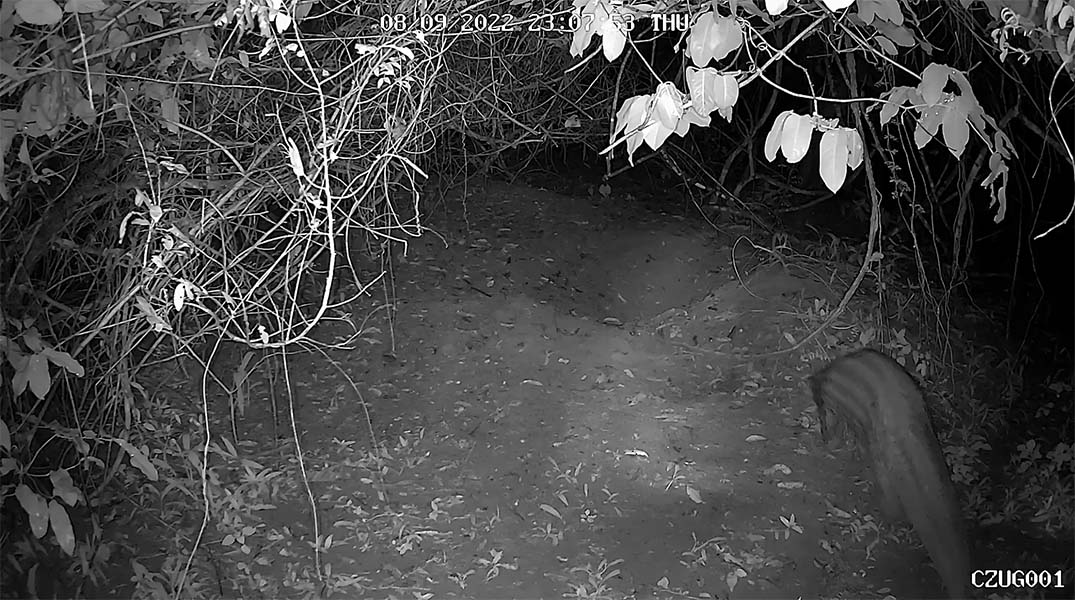Artificial intelligence (AI) is making it possible to protect some of the world’s most critically endangered species.
A UK-based nonprofit called Conservation AI is making this possible with the help of Nvidia technology. Such use of AI can help track even the rarest, most reclusive of species in real time, enabling conservationists to protect them from threats, such as poachers and fires, before it’s too late to intervene.
The organisation was founded four years ago by researchers at Liverpool John Moores University – Paul Fergus, Carl Chalmers, Serge Wich and Steven Longmore.
In the past year and a half, Conservation AI has deployed more than 70 AI-powered cameras across the world. These help conservationists preserve biodiversity through real-time detection of threats using deep learning models trained with transfer learning.
“It’s very simple – if we don’t protect our biodiversity, there won’t be people on this planet,” says Chalmers, who teaches deep learning and applied AI at Liverpool John Moores University. “And, without AI, we’re never going to achieve our targets for protecting endangered species.”
The Conservation AI platform – built using Nvidia Jetson modules for edge AI and the Nvidia Triton Inference Server – in just four seconds analyses footage, identifies species of interest and alerts conservationists and other users of potential threats via email.
It can also rapidly model trends in biodiversity and habitat health using a huge database of images and other metadata that would otherwise take years to analyse. The platform now enables conservationists to identify these trends and species activities in real time.
Conservation AI works with 150 organisations across the globe, including conservation societies, safaris and game reserves. To date, the platform has processed over 2-million images, about half of which were from the past three months.
Saving time to save species
Threats to biodiversity have long been monitored using camera traps – networks of cameras equipped with infrared sensors that are placed in the wild. But camera traps can produce data that is hard to manage, as there’s often much variability in images of the animals and their environments.
“A typical camera trap study can take three years to analyse, so by the time you get the insights, it’s too late to do anything about the threat to those species,” says Fergus, a professor of machine learning at Liverpool John Moores University. “Conservation AI can analyse the same amount of data and send results to conservation teams so that interventions can happen in real time, all enabled by Nvidia technology.”
Many endangered species occupy remote areas without access to human communication systems. The team uses Nvidia Jetson AGX Xavier modules to analyse drone footage from such areas streamed to a smart controller that can count species population or alert conservationists when species of interest are detected.
Energy-efficient edge AI provided by the Jetson modules, which are equipped with Triton Inference Server, has sped up deep learning inference by 4x compared to the organisation’s previous methods, according to Chalmers.
“We chose Triton because of the elasticity of the framework and the many types of models it supports,” he adds. “Being able to train the models on the Nvidia accelerated computing stack means we can make huge improvements on the models very, very quickly.”
Conservation AI trains and inferences its deep learning models with Nvidia RTX 8000, T4 and A100 Tensor Core GPUs – along with the Nvidia CUDA toolkit. Fergus called Nvidia GPUs “game changers in the world of applied AI and conservation, where there are big data challenges.”
In addition, the team’s species-detection pipeline is built on the Nvidia DeepStream software development kit for vision AI applications, which enables real-time video inference in the field.
“Without this technology, helicopters would normally be sent up to observe the animals, which is hugely expensive and bad for the environment as it emits huge amounts of carbon dioxide,” Chalmers says. “Conservation AI technology helps reduce this problem and detects threats to animals before it’s too late to intervene.”
Detecting pangolins, rhinos and more
The Conservation AI platform has been deployed by Chester Zoo, a renowned conservation society based in the UK to detect poachers in real time, including those hunting pangolins in Uganda.
Since many endangered species, like pangolins, are so elusive, obtaining enough imagery of them to train AI models can be difficult. So, the Conservation AI team is working with Nvidia to explore the use of synthetic data for model training.
The platform is also deployed at a game reserve in Limpopo, South Africa, where the AI keeps an eye on wildlife in the region, including black and white rhinos.
“Pound for pound, rhino horn is worth more than diamond,” Chalmers says. “We’ve basically created a geofence around these rhinos, so the reserve can intervene as soon as a poacher or another type of threat is detected.”
The organisation’s long-term goal, Fergus says, is to create a toolkit that supports conservationists with many types of efforts, including wildlife monitoring through satellite imagery, as well as using deep learning models that analyse audio – like animal cries or the sounds of a forest fire.
“The loss of biodiversity is really a ticking time bomb, and the beauty of Nvidia AI is that it makes every second count,” Chalmers says. “Without the Nvidia accelerated computing stack, we just wouldn’t be able to do this – we wouldn’t be able to tackle climate change and reverse biodiversity loss, which is the ultimate dream.”

